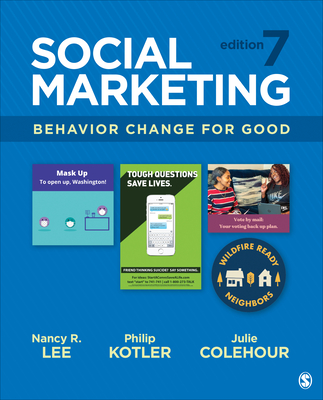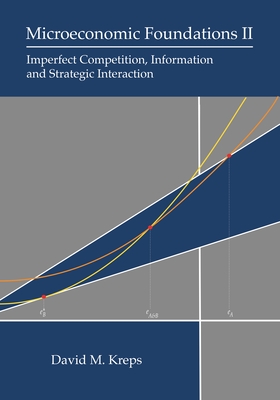图书简介
The Science of Glaucoma Management: From Translational Research to Next-Generation Clinical Practice bridges the gap between laboratory research and clinicians by bringing the latest promising research directly from researchers to clinicians long before they translate into clinical advances, and often before they are presented at conferences. Organized as a series of clinically relevant topics written by world-leading experts, this book summarizes the current state of laboratory and translational research and draws on the potential implications for day-to-day clinical practice. It offers new insights and mind-opening statements through contributions from some of the most respected glaucoma research groups. The book allows glaucoma specialists to explore novel ways to refine and rethink their practice based on the latest discoveries in basic sciences and breakthrough technologies, and to gain a better understanding on how their specialty is evolving and how research may shape tomorrow’s practice.
Part 1: Currently Accepted Glaucoma Practice 1. Pathophysiology 2. Epidemiology 3. Diagnosis and investigations 4. Follow-up 5. Treatments 6. Section Summary: Discussion on the major unmet needs of the specialty Part 2: Pathophysiology and investigation methods 7. Glaucoma epidemiology: the role of genetics and biomarkers 8. Considerations for an efficient screening programmes for glaucoma 9. Ocular perfusion in glaucoma and the role of arterial blood pressure 10. The role of circadian and extrinsic intraocular pressure fluctuations 11. Pseudo-exfoliative glaucoma: epidemiology, pathophysiology and their clinical impact 12. Retinal and optic nerve micro-perfusion and the role of OCT-A 13. Structural testing modalities: cicrumpapillary RNFL, BMO-MRW, macular RNFL or vessel density? 14. Statistical considerations on visual field testing: how frequent is frequent-enough? 15. Novelties in functional testing: the role of contrast sensitivity, electrophysiology and colour vision 16. Section Summary: Diagnosing the grey zone and follow-up considerations Part 3: Medical and laser therapies 17. Social and psychological aspects of treatment adherence 18. Topical medications and ocular surface 19. Novel pressure-lowering medications and research alternatives 20. Novel drug delivery methods 21. Matrix metalloproteinase 22. Medical lasers, basic principles and core differences 23. Physiological principles and effects of SLT; discussion over the LIGHT Trial 24. Prophylactic iridotomy in narrow angle glaucoma 25. Aqueous dynamics, glaucoma and corneal health (considerations for iridotomies) 26. Section Summary: Recommendations in treatment-naive open-angle glaucoma, treatment escalation protocols, and patient-specific considerations Part 4: Surgical options 27. Anatomical, mechanical and physiological effect of cataract surgery in open and narrow angle glaucoma 28. Anatomical considerations on trabecular meshwork, Schlemm’s canal and collecting channels 29. The role of ocular inflammation, fluid dynamics and bleb morphology in surgical outcomes (including long-term conjunctival sensitization with fibroblast, aqueous inflammatory markers, and effect of aqueous flow on bleb viability; and considerations on early/delayed surgery) 30. Aqueous angiography and targeted surgery 31. Minimally-invasive glaucoma surgery (MIGS) device design considerations 32. Novel approaches to aqueous drainage 33. Adjustable drainage devices: benefits and shortcomings 34. Implantable intraocular pressure sensors and telemedicine 35. Laser-assisted surgery 36. Considerations on glaucoma clinical trials 37. Section Summary: Surgical considerations: Finding the best patient-surgeon-procedure match Part 5: New technologies 38. Artificial intelligence and Big Data: technical considerations and clinical applications 39. Detection of apoptosing retinal cells (DARC) in glaucoma 40. Neuroprotection and neurostimulation 41. Clinical trials in neuroprotection: special considerations 42. Neuro-regeneration and stem-cell therapies 43. Gene therapy 44. Section Summary: Predicting the future of glaucoma practice
Trade Policy 买家须知
- 关于产品:
- ● 正版保障:本网站隶属于中国国际图书贸易集团公司,确保所有图书都是100%正版。
- ● 环保纸张:进口图书大多使用的都是环保轻型张,颜色偏黄,重量比较轻。
- ● 毛边版:即书翻页的地方,故意做成了参差不齐的样子,一般为精装版,更具收藏价值。
关于退换货:- 由于预订产品的特殊性,采购订单正式发订后,买方不得无故取消全部或部分产品的订购。
- 由于进口图书的特殊性,发生以下情况的,请直接拒收货物,由快递返回:
- ● 外包装破损/发错货/少发货/图书外观破损/图书配件不全(例如:光盘等)
并请在工作日通过电话400-008-1110联系我们。
- 签收后,如发生以下情况,请在签收后的5个工作日内联系客服办理退换货:
- ● 缺页/错页/错印/脱线
关于发货时间:- 一般情况下:
- ●【现货】 下单后48小时内由北京(库房)发出快递。
- ●【预订】【预售】下单后国外发货,到货时间预计5-8周左右,店铺默认中通快递,如需顺丰快递邮费到付。
- ● 需要开具发票的客户,发货时间可能在上述基础上再延后1-2个工作日(紧急发票需求,请联系010-68433105/3213);
- ● 如遇其他特殊原因,对发货时间有影响的,我们会第一时间在网站公告,敬请留意。
关于到货时间:- 由于进口图书入境入库后,都是委托第三方快递发货,所以我们只能保证在规定时间内发出,但无法为您保证确切的到货时间。
- ● 主要城市一般2-4天
- ● 偏远地区一般4-7天
关于接听咨询电话的时间:- 010-68433105/3213正常接听咨询电话的时间为:周一至周五上午8:30~下午5:00,周六、日及法定节假日休息,将无法接听来电,敬请谅解。
- 其它时间您也可以通过邮件联系我们:customer@readgo.cn,工作日会优先处理。
关于快递:- ● 已付款订单:主要由中通、宅急送负责派送,订单进度查询请拨打010-68433105/3213。
本书暂无推荐
本书暂无推荐















